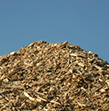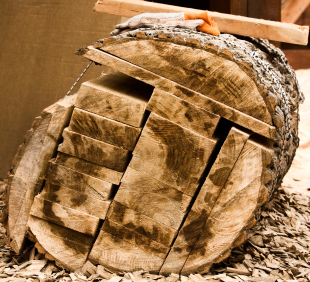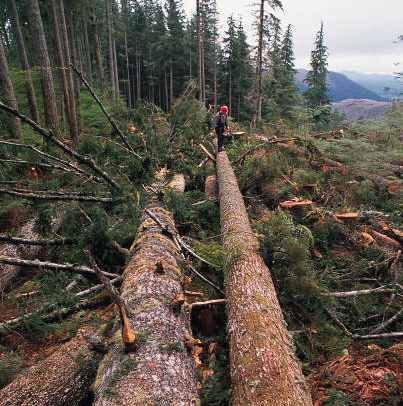|
Top 3 Stories from the May Issue
|
|
|
| INDUSTRY AT A GLANCE
From Forest2Market's Economic Outlook |
New manufacturing and service sector orders provide some short-term optimism for Forest2Market's economic outlook.
Up during eleven of the last twelve months, new orders at the total manufacturing level increased $5.0 billion (1.3 percent) to $391.5 billion in March. New orders for nondurable goods provided most of that impetus by increasing $6.0 billion (2.9 percent) to $212.8 billion. But durable goods orders dropped by $1.0 billion (0.6 percent) to $178.7 billion, after three consecutive monthly increases. Excluding transportation (the biggest "negative"), new durables orders increased 3.1 percent.
|
 | HOUSING MARKET UPDATE | 
Sales of both existing and new homes climbed once again in April. According the National Association of Realtors (NAR), existing home sales were 7.6 percent higher on a month-over-month basis and 22.8 percent on a year-over-year basis. The Census Bureau reported new home sales were 14.8 percent higher on a month-over-month basis and 47.8 percent stronger on a year-over-year basis (Table 1). The NAR's pending home sales index climbed in March, up 7.1 percent versus last month and 23.1 percent year over year. In April, pending home sales increased again: up 6.0 percent month over month and 22.4 percent over the previous year.
For existing sales, 49 percent of homes in April were sold to first-time buyers, repeat buyers purchased and 36 percent investors bought 15 percent.
|
 | CHIP PRICES IN THE SOUTH AND PNW |
Chip Prices Near Parity
For many years, pulp and paper mills in the Pacific Northwest have been at a disadvantage to those in the South. A combination of high fiber costs and advancing age have caused many mills to struggle with efficiency barriers and marginal profitability. Over the last six months, however, this competitive disadvantage has improved significantly. For the first time in years, wood fiber costs in the Pacific Northwest are roughly equivalent to those in the South. It appears the lengthy trend of disproportionately high PNW fiber costs has been reversed--at least for now.
Higher delivered pulpwood costs in the South are one of the reasons for this parity. Since 3Q2009, delivered pulpwood prices have been trending significantly higher in the South. In 1Q2010, pine pulpwood (total fiber) prices increased 7 percent from 4Q2009 and 12 percent from 1Q2009. Hardwood pulpwood prices (total fiber) increased even more dramatically, climbing 18 percent quarter over quarter and 19 percent year over year.
|
 | "GOT TREES?" |
Forest Products Industry Check-Off Programs
"Wood, the Other 'Green' Building Material." "Got Paper?" "Happy Trees." In the near future, slogans like these might be coming to you from your TV or favorite magazine. In March 2009, after conducting a feasibility study, the US Endowment for Forestry and Communities formed a Blue Ribbon Commission and charged it with developing a check-off program for the softwood lumber market. The check-off would support a long-term strategic program to market wood, increase the volume of softwood lumber sold and expand market share and returns. In March 2010, the American Forest and Paper Association and the US Endowment for Forestry and Communities each donated $150,000 to fund a similar feasibility study on creating a check-off program for the paper and packaging industry.
|
 | COMMON GROUND IN THE FOREST |

The prevailing narrative describing the relationship between environmentalists and the forest products industry may be about to change. In May, the two groups signed The Canadian Boreal Forest Agreement. The agreement covers 170 million acres of boreal forests; it calls for the immediate suspension of new logging on 75 million acres, the intent of which is to protect caribou habitat, and for the two sides to spend the next three years defining restrictions for the remaining 95 million acres. In return, the environmental groups that signed the agreement will suspend "do not buy" campaigns and eventually endorse products produced by those forest products companies that signed and follow the agreement.
"Do not buy" campaigns in Canada have focused on the customers of major forest products companies, and they have been remarkably successful. In the early 2000's, ForestEthics, one of the environmental groups that signed the agreement, ran campaigns against Staples and Office Depot, encouraging consumers not to shop in these stores. In response, both companies revised their procurement policies, sourcing only environmentally sustainable paper.
|
 | NEWS | |
Georgia-Pacific Buys Alabama River from Parsons and Whittemore
Georgia-Pacific, which owns 39 mills throughout the mid-South, has reached an agreement with Parsons and Whittemore, the owner of Alabama River and Alabama Pine pulp mills in Perdue Hill, Ala., to purchase the two mills and their assets.
The additional assets included in the deal are Alabama River Woodlands, chip mills at Elba and Jacksons Gap, a pulpwood yard at Demopolis, a tall oil plant and a biodiesel plant. These assets will join the seven pulp and paper mills, five chip mills and one woodyard that Georgia-Pacific currently operates in the South.
Dixie Pellets' Assets Sold
On May 17, U.S. Bankruptcy Court approved the sale of Dixie Pellets' assets. At the time it filed for bankruptcy in September 2009, Dixie Pellets reported $70 million in debt. When announced, the plant was expected to cost $75 million to build.
How much money did Dixie raise in the sale? The bulk of the money was raised from the sale of the plant. Zilkha Biomass Energy of Houston, a company that develops small-scale combined heat and power projects using its Zilkha Biomass Unit, purchased the facility for $6.25 million. No report on what Zilkha plans for the site or the equipment. Also included in the sale were 10 barges, which sold to BKM Holding LLC for $3.8 million and a tugboat that sold for $30,000.
In total, the $10 million raised in the bankruptcy sale will not go far. Dixie Pellets' current debt includes over $35 million in claims from creditors, $188,000 in property taxes, plus undisclosed amounts for attorneys' fees and other recovered charges allowed under bankruptcy law. |
 | MEET SAM HOUSTON AT THE COFE ANNUAL MEETING |
Sam Houston, Manager of Supply Chain Services at Forest2Market, will be speaking about Biomass supply and demand at the 33rd Annual Council on Forest Engineering meeting in Auburn, Ala. on June 7. The meeting takes place June 6-9. More details about the meeting. |
|
|
|
|